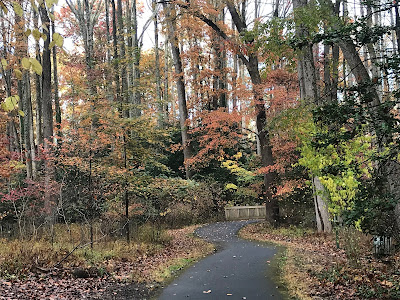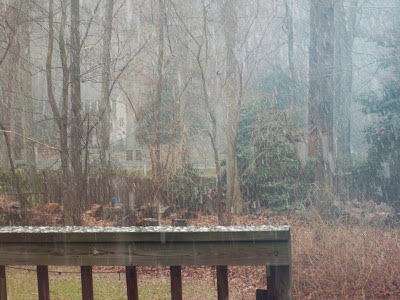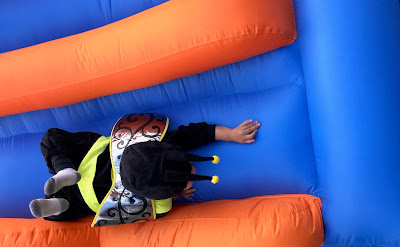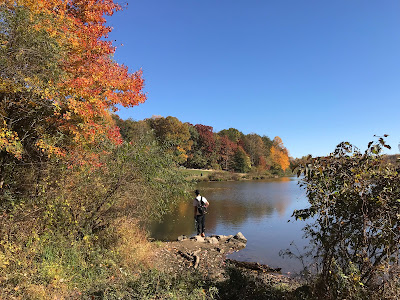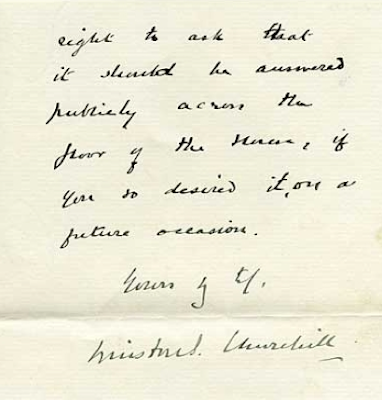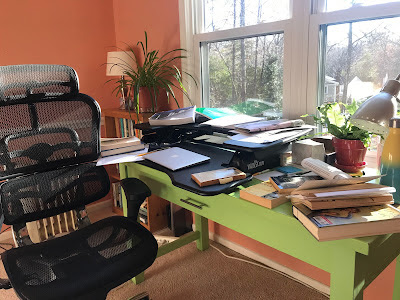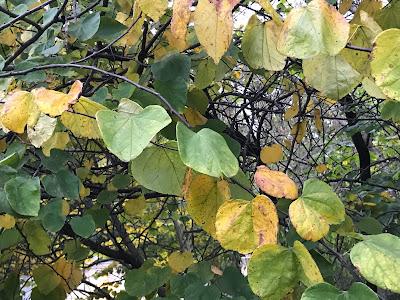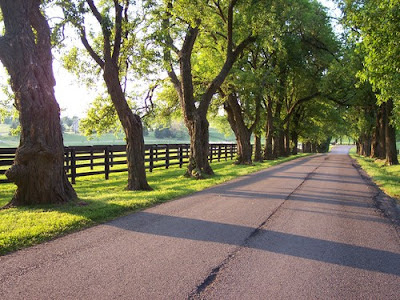Leaf on Leaf
Yesterday’s walk took me on the Reston trail that loops behind the church, a lofty forest and a most beauteous sight on a warm and breezy late fall morning.
I paused several times to snap a photo, to catch an angle of light, a leaf in its falling.
I noticed how tumbling leaves sometimes snag and catch, land on other leaves, which cup and protect them, as if to say, we’ll keep you here another day, here on a branch and not on the ground. We’ll keep you upright, limb-bound, a creature of air not yet of earth.
